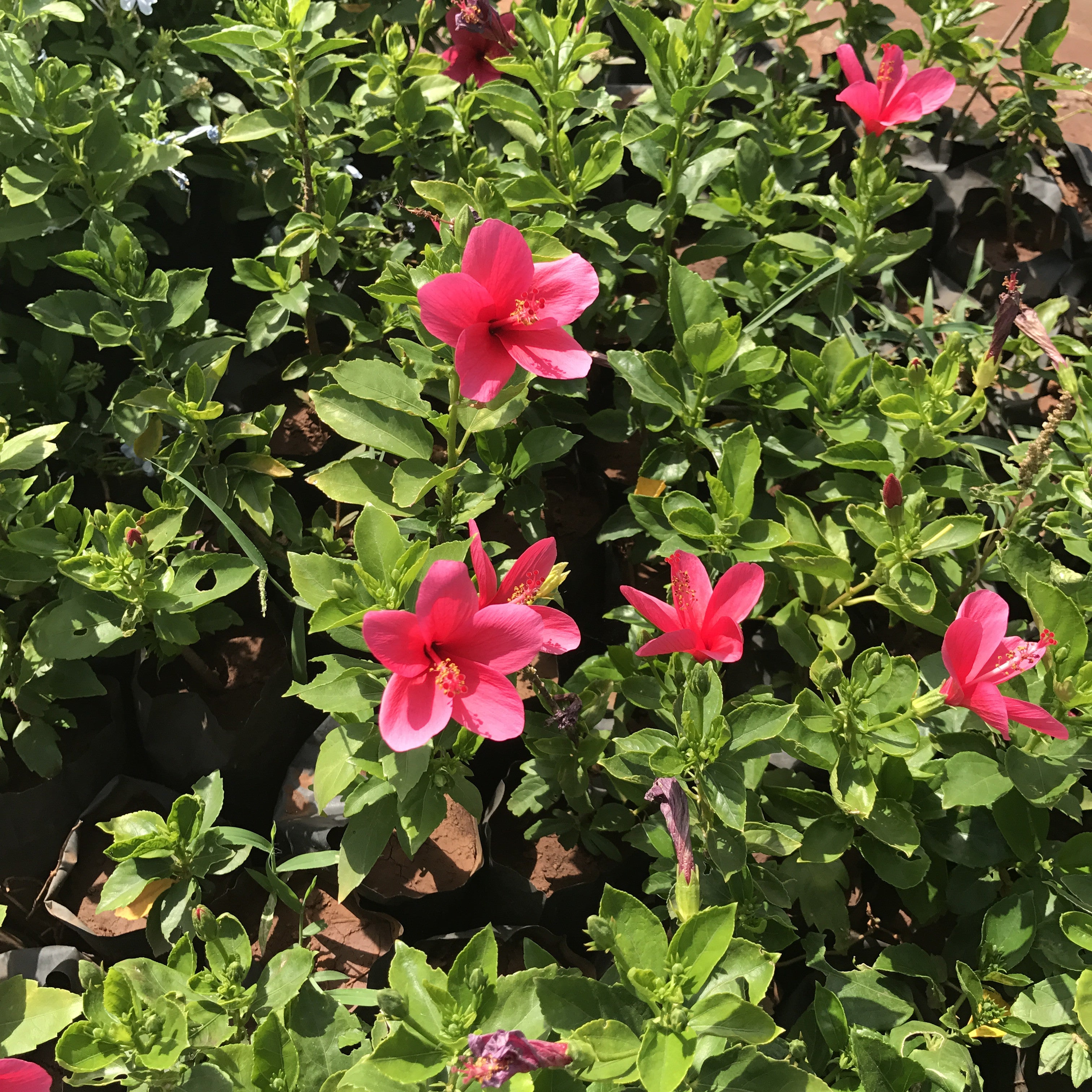Hibiscus rosa-sinensis
Family
Malvaceae
Origin
East Asia
Description
Chinese Hibiscus is a vigorous and easy to grow tropical hibiscus with an upright to spreading habit. It grows between 2 to 3 feet instead of 6 to 8 feet (or more) as with traditional hibiscus.. The Dwarf Hibiscus have a small, pink, 6 petals, showy, colourful flowers. Their pollen and nectar rich flowers attract a host of pollinators including bees, butterflies, and hummingbirds.
This plant grows dense and large. The variegated leaves change colour with age, and when planted in more sun, often hold on to the red and pink colours better. Variegated Hibiscus will be showiest around other plants that are dark green or dark red with larger, bolder and non-variegated leaves. Green foliage is dramatically splashed with bright white which provides striking contrast to the large red flowers.
Environment
Dwarf hibiscus tree needs at least six to eight hours of bright sunlight every day. Inadequate sunlight will result in smaller blooms and stunted growth..
Being a fast growing plant, hibiscus prefer well drained rich soil and regular watering. Thoroughly water to moisten the entire root-ball each time you water. Allow the soil to become slightly dry between watering approximately to a depth of between 1/2" deep for small containers to 1" deep for large containers. Never keep the soil soggy. Avoid using a saucer or empty any excess water from it 30-40 minutes after watering.
Fertilize hibiscus monthly with a general-purpose fertilizer or organic fertilizers like vermicompost or bio compost.
Prune the dwarf hibiscus tree occasionally to maintain the desired shape. Although dwarf hibiscus won't need a lot of pruning, trimming branch tips will encourage a compact, bushy shape. Prune dead or spindly branches. Keep the dwarf hibiscus neat by removing dead leaves and plant debris. Keeping the plant neat will not only look better, but will help to prevent pest problems.
Watch for mealy bugs on the leaves of dwarf hibiscus. If you notice mealy bugs, indicated by small areas of white, sticky matter on the top and bottom of the leaves, pick the bugs off with a cotton swab dipped in rubbing alcohol. If possible, avoid getting rubbing alcohol on the leaves
Landscape Use
Ideal for container plant or mixed border..





















